My Most Thrilling Sky Fight: Lieutenant Joe Wehner
AMIDST all the great pulp thrills and features in Sky Fighters, they ran a true story feature collected by Ace Williams wherein famous War Aces would tell actual true accounts of thrilling moments in their fighting lives! This time we have Frank Luke’s tail gunner, Lieutenant Joe Wehner!
Lieutenant Frank Luke 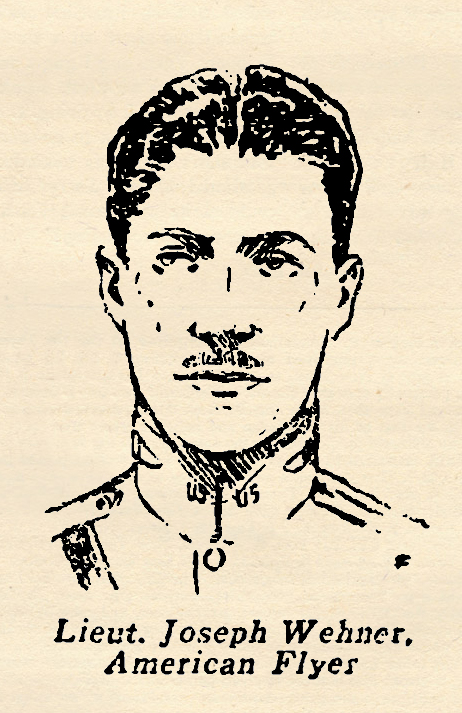 was the most daring sky fighter in the American Air Service. But it is hard to say whether he would have established the record he did without the aid of Joe Wehner, his constant and steadfast companion and buddy in the 27th Squadron. He was Luke’s alter ego.
was the most daring sky fighter in the American Air Service. But it is hard to say whether he would have established the record he did without the aid of Joe Wehner, his constant and steadfast companion and buddy in the 27th Squadron. He was Luke’s alter ego.
When war was declared by the United States, Joe Wehner hitch-hiked his way from Boston, Massachusetts to Kelly Field, Texas, to join the flying service. Wehner was finally dropped from his squadron when it left Kelly for overseas because he was suspected of being a German spy. He managed, however, to get reinstated at the point of debarkation. His fellow officers, however, never ceased to look upon him with suspicion. That is, all except Luke. Luke stood up for Wehner and this made him an outcast in the 27th until he began to compile his flaming and meteoric record. Flying with Luke on those record-making flights was Joe Wehner, and Luke himself admitted after Wehner was killed in action, that if it hadn’t been for Joe Wehner, who served as his protection when he went Drachen hunting, he doubted if he would have been able to down the number of Drachens credited to him.
Wehner shot down three enemy planes while flying this rear guard duty for Luke. As a protection flyer, there was none better in the American Air Service than Joe Wehner.
From on of Wehner’s letters to his boyhood friend in Boston, the following account is taken.
STALKING THE DRACHEN
by Lieutenant Joseph Wehner • Sky Fighters, January 1936
FRANK and I have developed a specialty. We are sausage hunters. Sausages, you know, are anchored observation balloons. The Boche call them Drachens. One day when I was flying rear guard for Luke, he shot down two of them within two min-
In addition to the Drachens he got two Bocke planes, and I was lucky enough to down one myself. In one swift, hectic fight, we accounted for five Boche, and we were outnumbered three to one. But Luke never takes account of odds.
We went out just at twilight, saw two Hun Drachens straining against their cables and weaving in the wind near Vieux. Frank held up his arm and signaled me that he was going down to get them, one after the other. I saw a patrol of Boche Fokkers further back across the lines, so I began to climb for ceiling as Frank started down toward the balloons. I aimed to get between him and the Fokkers to keep them off his tail when he started firing at the balloons.
Frank got the first Drachen before I could get between him and the Boche. He split-aired through the enfilade of machine-gun and anti-aircraft fire, and made a bee line for the second Drachen less than a kilometer distant. He scooted along at terrific speed not more than a hundred feet off the ground. But the Fokkers having height streaked even faster for him. There was a full Staffel of them. I piqued to head them off. The Staffel separated then into three flights. One went to my right, the other to my left and the center flight came at me hell for leather.
I picked the first Fokker and gave him the works. My aim was true. It wobbled for an instant. Then the pilot slumped down in the pit, and the Fokker slid off in a spin. I was watching it fall when a clatter of leaden hail rattled through my upper wing tank. The gas began pouring out in a blinding spray. Then black smoke enveloped me. For an instant I thought my Spad was aflame. The fumes were choking. But the smoke instantly cleared, and I realized it was the smoke of the second Drachen which I had winged through. Luke had made swift work of that sausage and was going round and round now with a Boche, while two more were darting in on him from different angles above.
I went down for the Boche on Frank’s tail, and we went at it hot and heavy. The whole sky seemed to be a kaleidoscopic whirl of diving, zooming, shooting black-crossed planes. Then one of the black-crossed ships burst into flame. Luke had ridden it almost to earth, firing with both guns. Zooming up when it crashed, he made for another Hun’s blind belly, and brought it down before the pilot knew what had happened.
The wind had drifted us across our own lines now, and the Boche Staffel leader called it enough, I guess, for all of a sudden they beat it for their own lines. Frank chased them until he ran out of ammo, and I coursed along on top of him. But we got in no more licks.
Next Time: MAJOR ANDREW McKEEVER





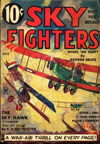
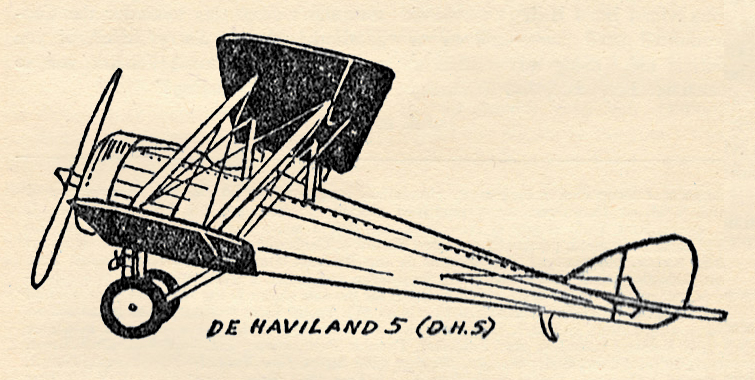
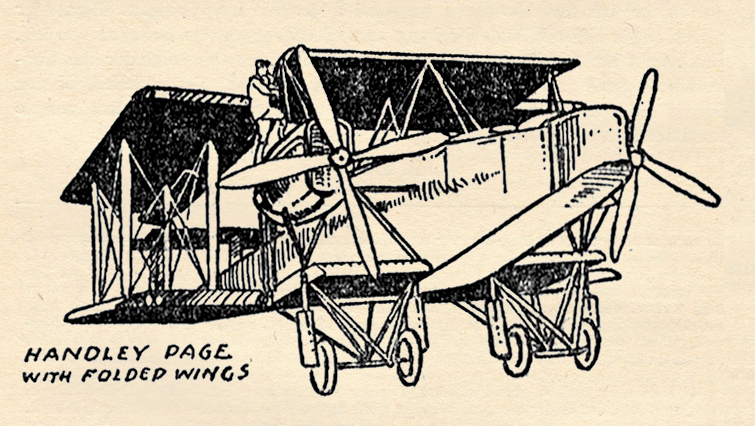
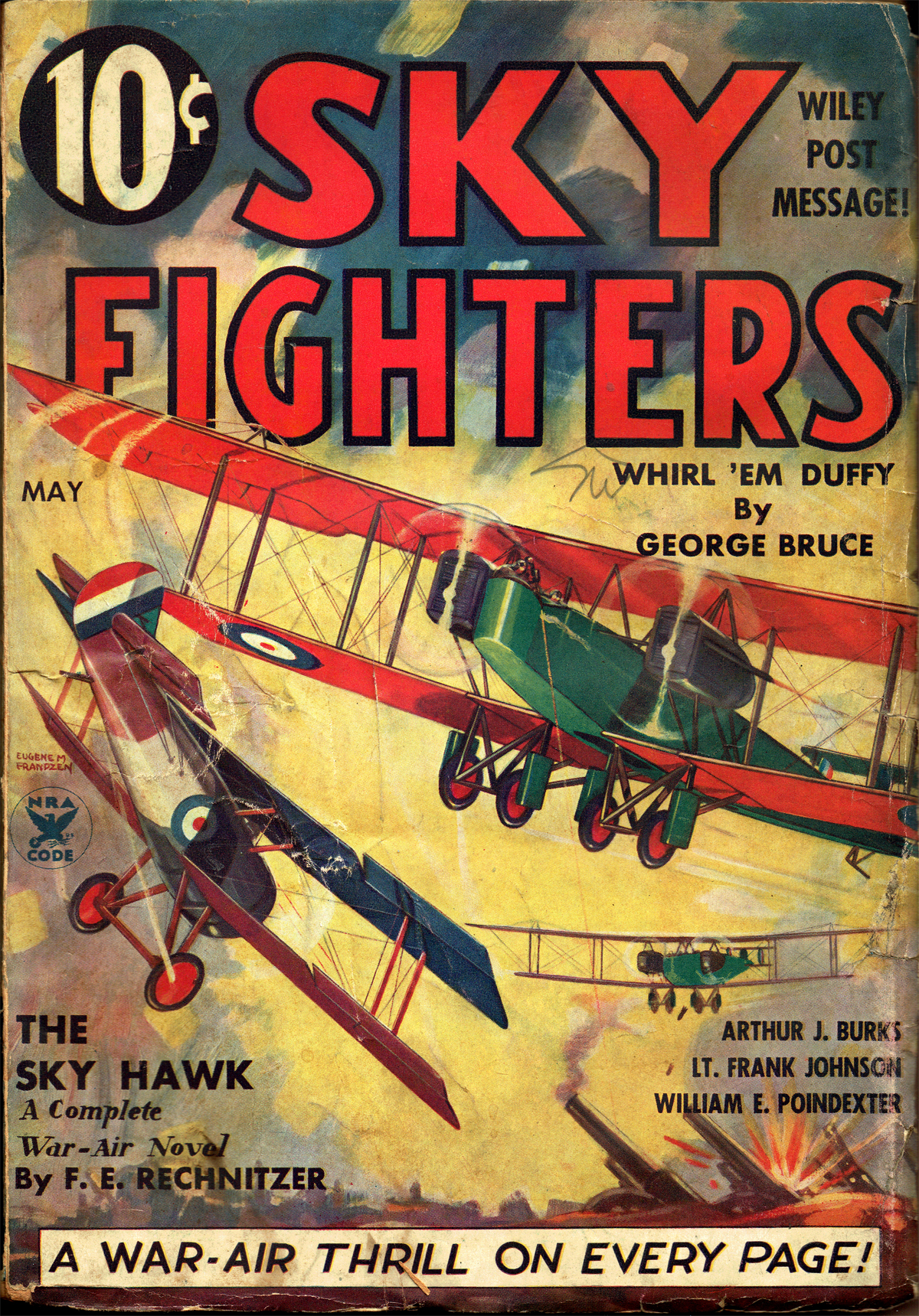
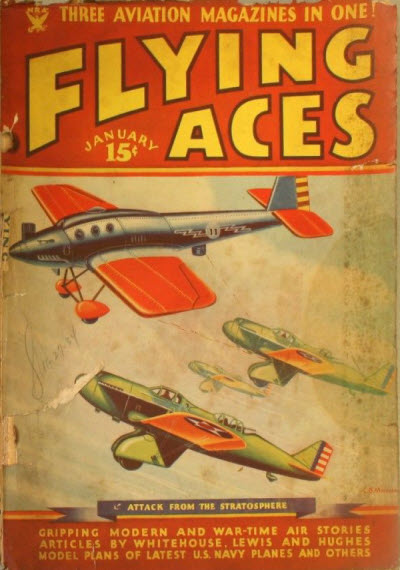 You heard right! That marvel from Boonetown, Iowa is back causing more trouble than he’s worth! That Knight of Calamity manages to find not only the Boche’s ammo train, but a former victim of the ol’ Pinkham charm from his hometown now glad to seek revenge! How can he stop the Boche ammo train, escape the butcher of Boonetown, and capture the Rittmeister von Schnoutz? He does it all with mirrors—Find out in “An Itch In Time” from the pages of the January 1935 Flying Aces.
You heard right! That marvel from Boonetown, Iowa is back causing more trouble than he’s worth! That Knight of Calamity manages to find not only the Boche’s ammo train, but a former victim of the ol’ Pinkham charm from his hometown now glad to seek revenge! How can he stop the Boche ammo train, escape the butcher of Boonetown, and capture the Rittmeister von Schnoutz? He does it all with mirrors—Find out in “An Itch In Time” from the pages of the January 1935 Flying Aces.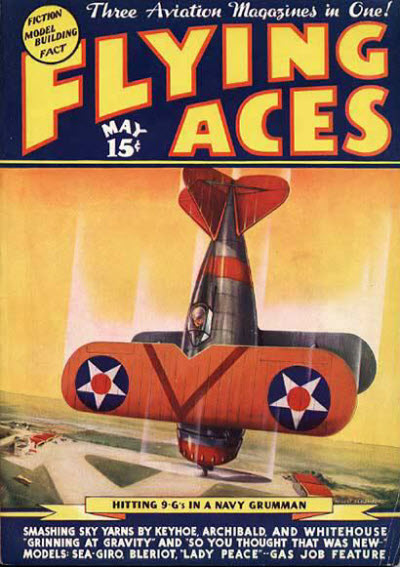 had a story in a majority of the issue of Flying Aces from his first in January 1930 until he returned to the Navy in 1942. Starting in August 1931, they were stories featuring the weird World War I stories of Philip Strange. But in November 1936, he began alternating these with sometime equally weird present day tales of espionage Ace Richard Knight—code name Agent Q. After an accident in the Great War, Knight developed the uncanny ability to see in the dark. Aided by his skirt-chasing partner Larry Doyle, Knights adventures ranged from your basic between the wars espionage to lost valley civilizations and dinosaurs. The mysterious Four Faces—a criminal cabal that seek to control all crime on the earth—has found a way to turn people to stone, which comes in handy while they continue to build their air fleet of stolen ships!
had a story in a majority of the issue of Flying Aces from his first in January 1930 until he returned to the Navy in 1942. Starting in August 1931, they were stories featuring the weird World War I stories of Philip Strange. But in November 1936, he began alternating these with sometime equally weird present day tales of espionage Ace Richard Knight—code name Agent Q. After an accident in the Great War, Knight developed the uncanny ability to see in the dark. Aided by his skirt-chasing partner Larry Doyle, Knights adventures ranged from your basic between the wars espionage to lost valley civilizations and dinosaurs. The mysterious Four Faces—a criminal cabal that seek to control all crime on the earth—has found a way to turn people to stone, which comes in handy while they continue to build their air fleet of stolen ships! 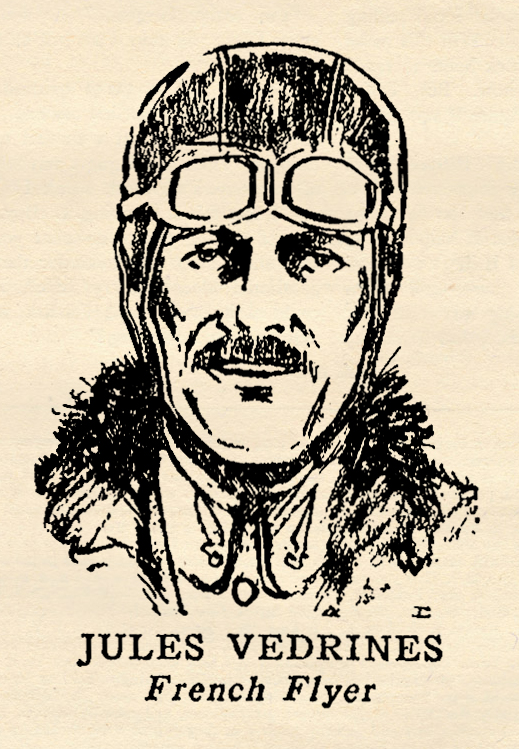 great war broke out Jules Vcdrines was the most famous flyer of France. He had twice won the Gordon Bennett speed trophy, and held both distance and altitude records. It was through his efforts that France wrested supremacy of the air from the United States and Great Britain. Along with Garros, Pegoud, Marechal, Le Blanc, Audemars, and other famous French flyers of his day, he enlisted in the French Flying Corps the day after war was declared.
great war broke out Jules Vcdrines was the most famous flyer of France. He had twice won the Gordon Bennett speed trophy, and held both distance and altitude records. It was through his efforts that France wrested supremacy of the air from the United States and Great Britain. Along with Garros, Pegoud, Marechal, Le Blanc, Audemars, and other famous French flyers of his day, he enlisted in the French Flying Corps the day after war was declared.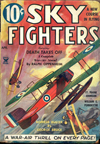
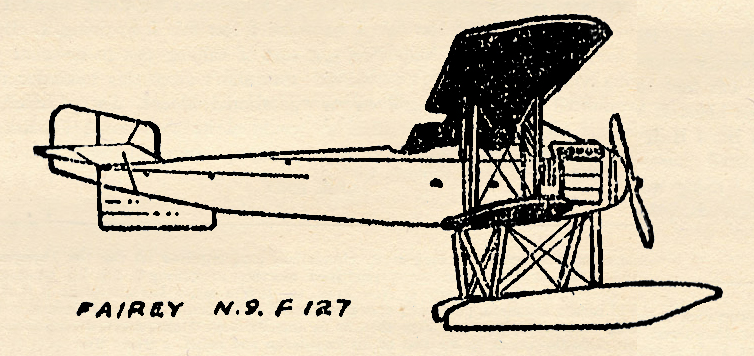
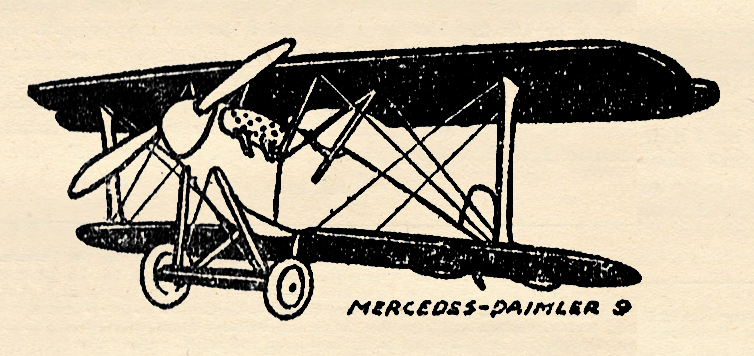
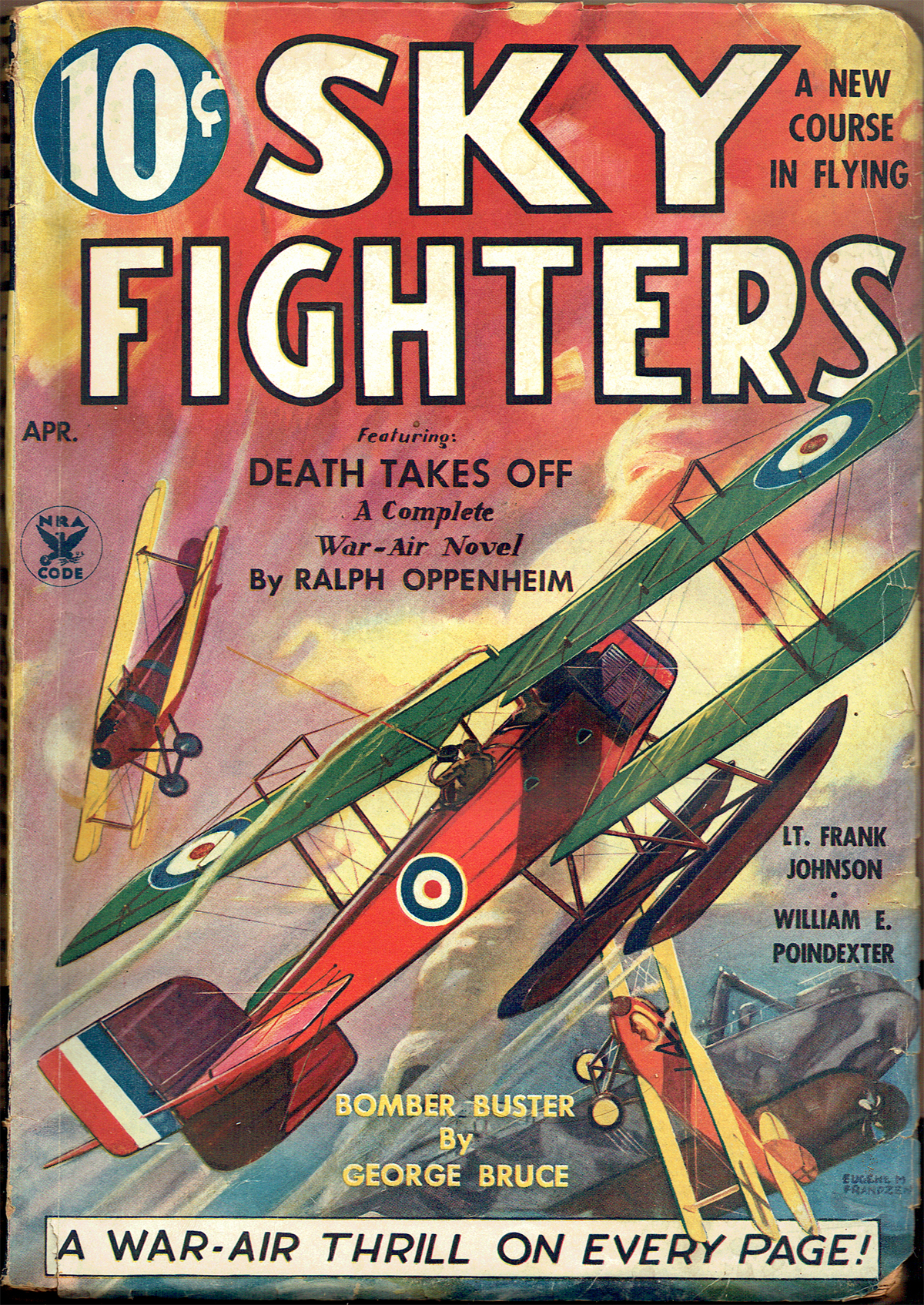
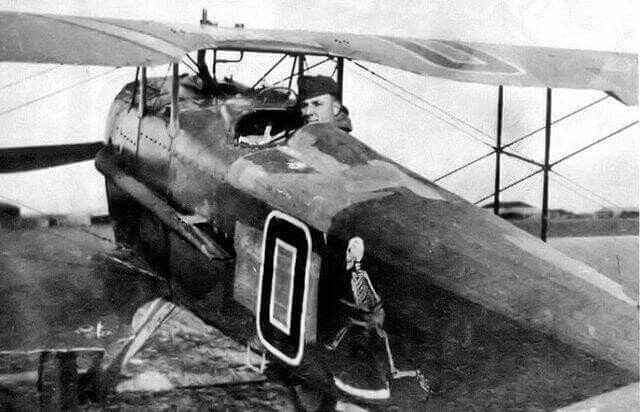
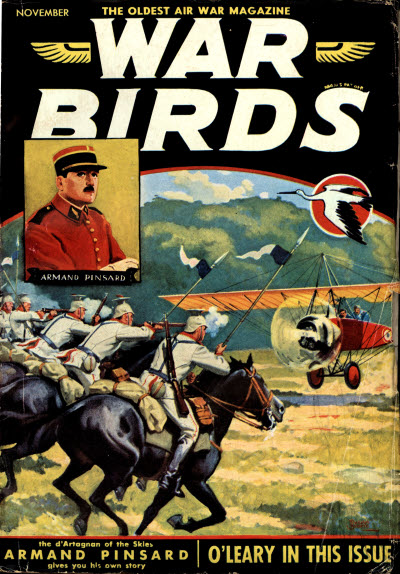 a story from the pen of C.M. Miller! Miller is known to Age of Aces readers as the author behind
a story from the pen of C.M. Miller! Miller is known to Age of Aces readers as the author behind 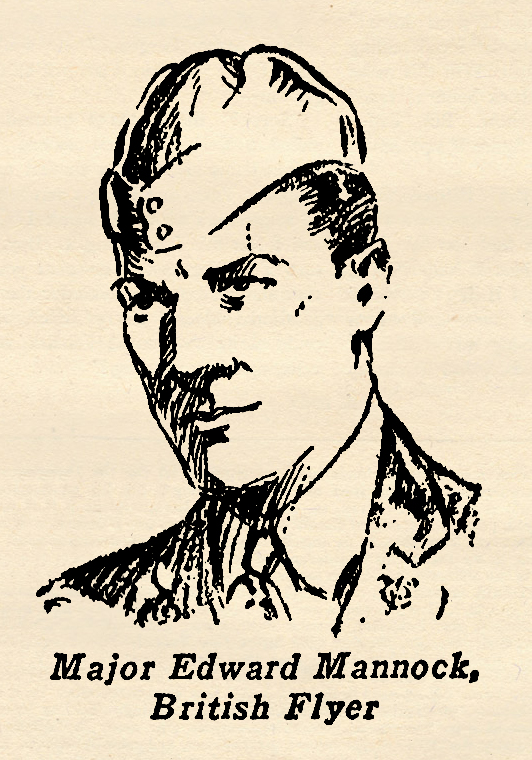 the British postal department, Turkey, when the war broke out. He was immediately made a prisoner by the Turks, and spent almost a year in an enemy camp before he was repatriated to England in 1915. He first served in the Royal Engineers, was commissioned as a lieutenant and transferred to the flying Corps in August, 1916. Major McCudden, the great British Ace, was his first instructor.
the British postal department, Turkey, when the war broke out. He was immediately made a prisoner by the Turks, and spent almost a year in an enemy camp before he was repatriated to England in 1915. He first served in the Royal Engineers, was commissioned as a lieutenant and transferred to the flying Corps in August, 1916. Major McCudden, the great British Ace, was his first instructor.